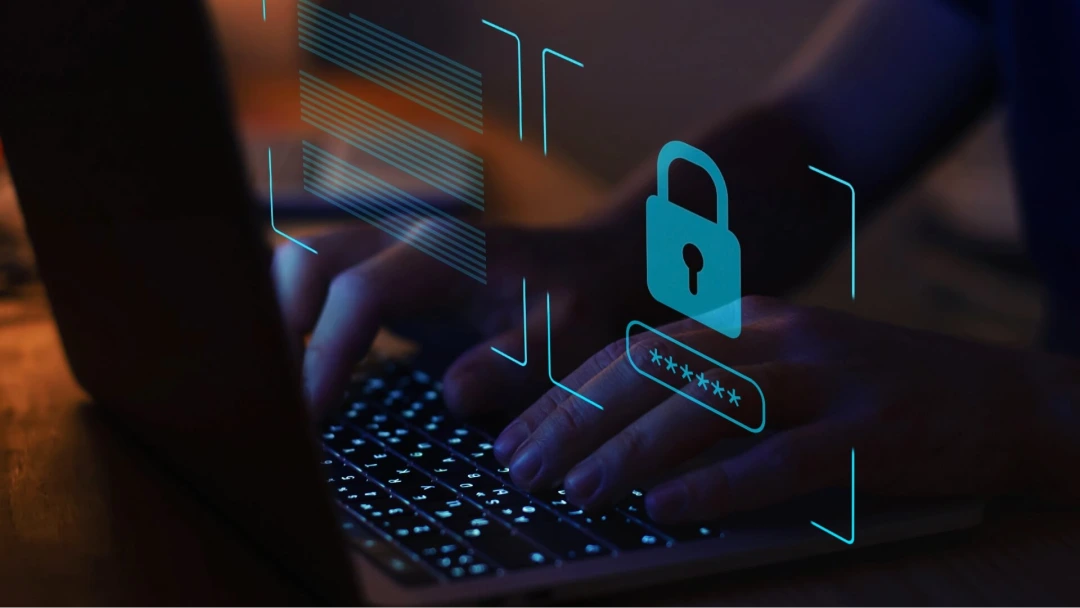In our school community, the digital world can feel like a minefield. You get an email from your favorite store, promising a huge discount. Seems legit, right? But hold on, is it really? Phishing and social engineering are the sneaky tactics that scammers use to trick you into giving away your personal info. It’s like a game where they try to outsmart you. Today, we’re diving into these digital threats to understand how they work and how to protect ourselves. It’s all about spotting the red flags and knowing what to do when things look fishy. Let’s get into it!
Key Takeaways
-
Phishing often involves fake emails or messages that look real to trick you into giving out personal info.
-
Social engineering is a broader tactic where scammers manipulate you into revealing confidential information.
-
Both phishing and social engineering can have serious impacts on individuals and organizations, including financial loss.
-
Recognizing the signs and knowing how to respond are crucial steps in defending against these attacks.
-
Education and awareness are key in building a strong defense against digital threats in our school community.
Recognizing Phishing: The Digital Deception
Identifying Common Phishing Tactics
Phishing is like the digital version of a con artist, trying to trick you into giving up your personal info. These scams usually come through emails, but they can also hit you with texts or phone calls. A common trick is to create a sense of urgency, making you think you need to act fast, like “Update your password now!!!!” Some are easy to spot because of bad grammar and sketchy links, but others look super legit, mimicking trusted companies or people.
Spotting Red Flags in Emails and Messages
When you get an unexpected message, it’s time to put on your detective hat. Here are some red flags:
-
Suspicious sender’s email address: If it looks off, it probably is.
-
Typos and weird language: Legit companies usually proofread their stuff.
-
Unusual requests: Asking for personal info like passwords or social security numbers is a huge no-no.
-
Links that don’t match: Hover over links to see where they really go. If it’s not the official site, don’t click.
Steps to Take When You Suspect Phishing
So you think you’ve got a phishing email? Here’s what you do:
-
Don’t click any links or download attachments. This is how they get you.
-
Verify the sender. Check the email address and contact the company directly if you’re unsure.
-
Report the email to your IT department or email provider.
-
Delete the email from your inbox and trash.
Phishing scams are more than just a nuisance—they’re a real threat to your personal and financial security. By staying alert and knowing the signs, you can protect yourself and your community from these digital deceptions.
Social Engineering: Manipulation in the Digital Age

Understanding Social Engineering Tactics
Social engineering is all about tricking people into giving up their secrets. It’s like a con artist, but in the digital world. The attackers use psychological tricks to get folks to hand over personal info or access to systems. One common tactic is pretexting, where the scammer pretends to be someone trustworthy, like a tech support agent or even a friend. They might also use baiting, offering something tempting to lure you into a trap, like a free gift or download that’s actually malware.
Real-Life Examples of Social Engineering
These attacks happen more often than you’d think, and they’re not just stories. Take the case of a major retail chain that got hit because an attacker pretended to be a vendor. They tricked an employee into giving them access to the company’s network. Or consider the time when a government official was fooled by a fake email that looked just like it came from a trusted colleague. The damage can be huge, affecting both individuals and organizations.
How to Protect Yourself from Social Engineering
So, how do you stay safe? Start by being skeptical. If something feels off, it probably is. Always verify who you’re talking to, especially if they’re asking for sensitive info. Here are some quick tips:
-
Verify identities: Use another method to confirm who you’re dealing with.
-
Be cautious with links: Don’t click on links from unknown sources.
-
Educate yourself and others: Knowledge is power, so stay informed about the latest tactics.
Staying ahead of scammers means being vigilant and cautious. Remember, it’s easier to prevent an attack than to deal with the aftermath.
Phishing vs Social Engineering: Key Differences
Defining Phishing and Social Engineering
Phishing and social engineering are two sides of the same coin, both aiming to trick individuals into revealing sensitive information. Phishing is a tactic that uses fake emails or websites to lure users into providing personal data. On the other hand, social engineering involves manipulating people into breaking normal security procedures. It’s broader and can include tactics like phone calls or even in-person interactions.
Comparing Techniques and Tactics
Phishing is a subset of social engineering, focusing primarily on digital communication. Common phishing tactics include:
-
Email Phishing: Sending fake emails that appear to be from legitimate sources.
-
Spear Phishing: Targeting specific individuals with personalized emails.
-
Whaling: Aimed at high-profile individuals like executives.
Social engineering tactics, however, go beyond digital means:
-
Pretexting: Creating a fabricated scenario to steal information.
-
Baiting: Offering something enticing to get a person to give up data.
-
Tailgating: Following someone into a restricted area to gain access.
Impact on Individuals and Organizations
Phishing and social engineering can have severe consequences. For individuals, it might mean identity theft or financial loss. For organizations, these attacks can lead to data breaches and significant financial damage. Schools, in particular, face unique challenges, as both phishing and social engineering can exploit students’ and staff’s lack of awareness.
Understanding the nuances between phishing and social engineering is crucial. While phishing often relies on digital deception, social engineering can be much more personal, exploiting human psychology to bypass security measures. Recognizing these differences helps in crafting more effective defenses.
Building a Defense: Tools and Strategies
Technological Solutions to Combat Phishing
In today’s digital age, schools are prime targets for phishing attacks. To counter these threats, a combination of technology and awareness is crucial. Multi-layered security systems are a must-have. Implementing email filters and using multi-factor authentication (MFA) can significantly reduce the risk of unauthorized access. Schools should also invest in endpoint detection tools to quickly isolate and neutralize potential threats.
Consider this table for a clearer picture of technological defenses:
|
Tool |
Function |
|---|---|
|
Email Filters |
Block suspicious emails and reduce spam |
|
Multi-factor Authentication |
Adds an extra layer of security for logins |
|
Endpoint Detection |
Identifies and isolates threats on devices |
Personal Strategies for Online Safety
While technology plays a big role, personal vigilance is equally important. Here are some strategies to stay safe online:
-
Be skeptical of unsolicited emails: Always question emails from unknown senders, especially those asking for personal information.
-
Verify before clicking: Hover over links to check their legitimacy before clicking.
-
Use strong passwords: Ensure your passwords are unique and complex.
-
Regularly update software: Keeping your software up-to-date helps protect against vulnerabilities.
“In the digital world, your best defense is a cautious mind.”
Role of Education in Preventing Attacks
Education is a powerful tool in the fight against cyber threats. Schools should integrate cybersecurity topics into their curriculum, teaching students and staff to recognize and respond to phishing attempts. Regular workshops and training sessions can keep the school community informed about the latest threats and defenses.
Creating a culture of awareness can greatly reduce the likelihood of successful attacks. Encourage open discussions about cybersecurity and share tips on how to handle suspicious activities. This proactive approach can transform potential victims into informed defenders.
Case Studies: Lessons Learned from Real Incidents
Analyzing Successful Phishing Attacks
Phishing attacks are like the digital world’s sneaky pickpockets, always evolving and finding new ways to trick people. Let’s dive into some real-life incidents to see how these scams played out and what we can learn from them.
-
The Big Bank Heist: In this case, attackers sent out emails pretending to be from a major bank, claiming there was a problem with customers’ accounts. The emails looked legit, with the bank’s logo and everything. But there was a catch: the link led to a fake website where users were asked to enter their login details. Many fell for it, and the hackers got access to thousands of accounts.
-
The Charity Scam: During a natural disaster, scammers sent emails asking for donations to a well-known charity. They used emotional language to tug at people’s heartstrings. The email urged recipients to act quickly, a common tactic to lower their guard. Unfortunately, the money went straight into the scammers’ pockets.
-
The “You’ve Won!” Trick: This one involved fake messages about winning a prize. People were excited and clicked the link without thinking twice. The link led to a site asking for personal info to claim the prize, which was never real.
Lesson Learned: Always double-check the sender’s email address and never click on links in unsolicited emails. If something feels off, it probably is.
Understanding Social Engineering Failures
Social engineering is all about manipulation. It’s like a con artist’s game where the goal is to trick someone into giving up confidential information. Here are some examples where these tactics didn’t work as planned.
-
The Fake IT Support Call: An employee received a call from someone claiming to be IT support, asking for their password to “fix an issue.” The employee was suspicious and reported it instead of giving in.
-
The Impersonation Attempt: An attacker tried to gain access to a secure building by pretending to be a delivery person. Security protocols required verification, and the attempt was thwarted.
-
The “Urgent Request” Email: A CEO received an email supposedly from a colleague asking for sensitive information. The CEO noticed inconsistencies in the email and contacted the colleague directly, preventing a potential breach.
Lesson Learned: Trust your instincts and verify identities through official channels. Always follow security protocols.
Implementing Lessons for Future Safety
Learning from past mistakes is key to improving security. Here are steps to strengthen defenses against these kinds of threats:
-
Educate and Train: Regularly update staff and students on the latest security threats and how to handle them.
-
Implement Multi-Factor Authentication: This adds an extra layer of security, making it harder for attackers to gain access even if they have a password.
-
Develop a Response Plan: Have a clear plan in place for when a phishing or social engineering attempt is suspected. This should include steps for reporting and mitigating the threat.
“In the digital age, staying informed and cautious is your best defense against cyber threats.”
By analyzing these case studies, we can better understand the tactics used by attackers and ensure we’re better prepared to defend against them. Remember, awareness is the first step in prevention.
Empowering Our School Community Against Threats
In today’s digital world, it’s crucial for schools to create a culture of awareness among students and staff. Raising awareness about cyber threats can be as simple as organizing workshops or seminars that focus on the latest phishing and social engineering tactics. Through interactive sessions, both students and staff can learn how to recognize suspicious emails, such as those that increase during the holiday season, and understand the importance of verifying sources before clicking any links.
Schools can also distribute educational materials that highlight common red flags in phishing attempts, like email addresses that don’t quite match up or language that seems off. By sharing real-life examples and encouraging open discussions, schools can help everyone stay alert and informed.
Integrating cybersecurity into the school curriculum is a proactive way to prepare students for the digital challenges they might face. This can be done by incorporating cybersecurity principles into existing subjects or offering dedicated courses that teach students about online safety, data privacy, and the ethical use of technology.
Using platforms like SurfWisely, which combines cybersecurity lessons with engaging, sports-themed games, can make learning about cybersecurity fun and relatable. These tools not only equip students with practical skills but also spark an interest in potential cybersecurity careers.
Creating a safe school environment requires collaboration between students, teachers, and parents. Schools can set up cybersecurity committees that include representatives from each group to discuss and implement safety measures. Regular meetings can help keep everyone on the same page and ensure that the school’s cybersecurity practices are up to date.
Involving parents in these discussions is also important. They can be informed about the school’s cybersecurity policies and learn how to reinforce these practices at home. By working together, the entire school community can create a robust defense against digital threats.
By coming together as a community, schools can build a strong defense against cyber threats. It’s about creating a culture where everyone feels responsible for maintaining a safe digital environment. This sense of shared responsibility not only protects individuals but also strengthens the community as a whole.
The Future of Cybersecurity in Education

Emerging Threats and How to Tackle Them
In the ever-evolving digital landscape, schools face a constant barrage of cyber threats. From ransomware to phishing, the threats are getting more sophisticated. Schools must stay ahead of the curve by implementing robust security measures. This involves regularly updating software, using advanced threat detection systems, and educating the entire school community about potential risks. Schools should also have a response plan in place for when breaches occur, ensuring a quick and effective reaction to minimize damage.
Innovations in Cybersecurity Education
The way we teach cybersecurity is changing. New tools and methods are making it easier for students to understand and engage with complex topics. For instance, gamified learning platforms like SurfWisely use fun, interactive games to teach students about cybersecurity. These platforms not only make learning enjoyable but also help students retain information better. By integrating such innovative tools into the curriculum, schools can better prepare students for the digital world.
Preparing Students for Cybersecurity Careers
As the demand for cybersecurity professionals grows, schools have a unique opportunity to prepare students for future careers in this field. By offering specialized courses and hands-on experiences, schools can spark interest in cybersecurity among students. Programs that offer real-world scenarios and problem-solving tasks can equip students with the skills they need to pursue a career in cybersecurity. Moreover, collaborations with industry experts can provide students with valuable insights into the field.
Schools must embrace the digital age not just by protecting against threats but by empowering students with the knowledge and skills to thrive in a cybersecurity career. By doing so, they can create a safer digital environment for everyone.
As we look ahead, the world of cybersecurity in education is changing fast. Schools are becoming more aware of the dangers that students face online, from cyberbullying to data leaks. It’s important for students to learn how to protect themselves in this digital age. SurfWisely is here to help! Our fun and engaging programs teach students essential online safety skills through games and real-life situations. We make learning about cybersecurity easy and enjoyable, so every student can become a smart digital citizen. Don’t wait—visit our website to see how we can help your school today!
Conclusion
So, there you have it. Phishing and social engineering are like those sneaky plays in a game that catch you off guard. But now, you’re armed with the knowledge to spot them. Remember, it’s all about staying alert and questioning things that seem off. Whether it’s a strange email or a suspicious message, take a moment to think before you click or share personal info. By doing this, you’re not just protecting yourself, but also helping to keep our school community safe. Keep practicing these skills, and you’ll be ready to tackle any digital threat that comes your way. Stay smart, stay safe!
Frequently Asked Questions
What is phishing and why is it dangerous?
Phishing is a trick where someone pretends to be someone you trust to steal your personal info. It’s dangerous because it can lead to losing money or personal data.
How can I tell if an email is a phishing attempt?
Look for red flags like strange email addresses, spelling mistakes, or urgent requests for personal info. If it seems fishy, don’t click any links!
What should I do if I think I’ve been phished?
If you think you’ve been phished, don’t panic. Change your passwords right away and contact someone who can help, like a teacher or IT support.
How is social engineering different from phishing?
Social engineering is a broader trick where people try to fool you into giving up info. Phishing is a type of social engineering, usually done through fake emails.
What are some ways to protect myself from social engineering?
Always be careful about sharing personal info. Verify who you’re talking to and use strong passwords. If something seems too good to be true, it probably is.
Why is learning about phishing and social engineering important?
Learning about these threats helps you stay safe online and protect your personal information from bad guys who want to trick you.


